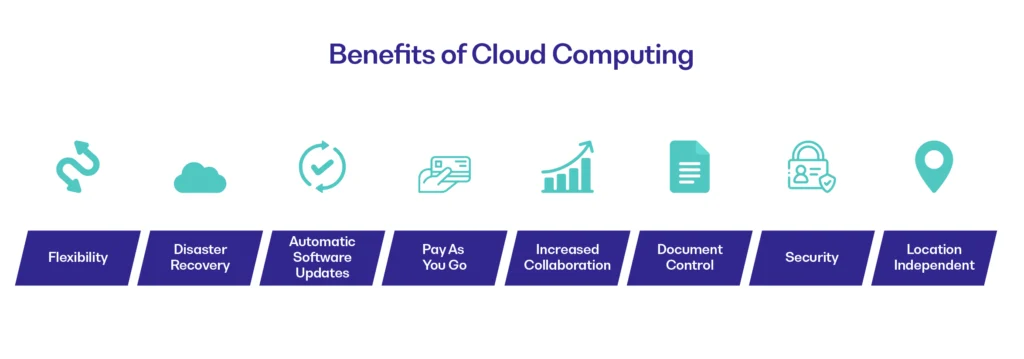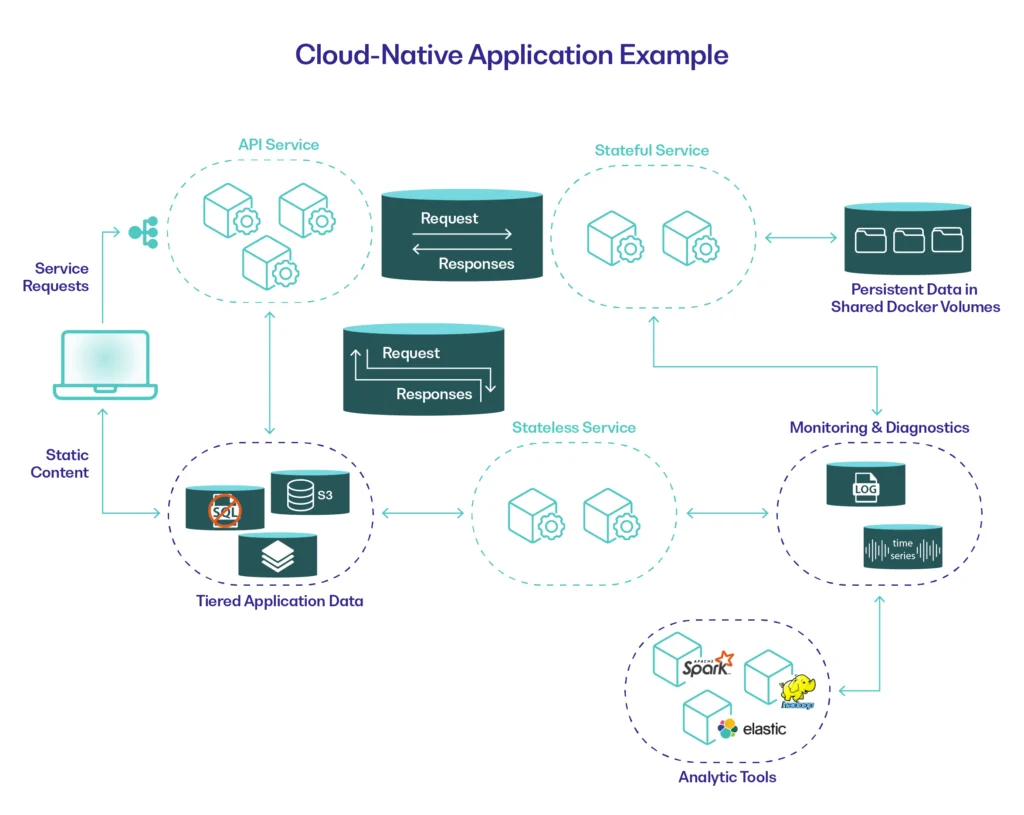Why successful enterprises are shifting to cloud-native architecture
Cloud-native applications and architecture offer the elasticity, flexibility and resiliency that enterprises need to succeed in modern business.
Table of contents
Intro
The past few years have shown the world how adaptability and flexibility are essential for businesses to remain resilient in the face of global upheavals, supply chain disruptions, and even cyber-attacks and network outages. Successful enterprises need to make their business processes and software applications more agile than ever — and more and more of them are turning to cloud-native applications to do so.
Cloud strategy is essential to modern business
According to a report by Gartner, global cloud revenue is expected to total $474 billion in 2022, an increase from $408 billion in 2021. Over the next few years, Gartner estimates that cloud revenue will surpass noncloud revenue for relevant enterprise IT markets. “There is no business strategy without a cloud strategy,” states Milind Govekar, distinguished VP analyst at Gartner.
In this article, we will discuss many different aspects of cloud technology: how cloud-hosted applications compare to cloud-native applications, cloud-native vs. traditional systems architecture, how cloud-native applications are structured and managed, and the benefits they offer.
How does cloud native differ from cloud-hosted and traditionally hosted software?
In traditional software architecture, a company would host its software solution on internal servers behind a firewall. In cloud-hosted architecture, the setup is similar—except that, rather than internal servers, a dedicated server space in the cloud is used. Both of these setups are known as single-tenant architecture, meaning that the server space and the software instance only serves a single client.

Cloud-native architecture changes things up significantly. In cloud native, a single software instance is hosted in the cloud and serves multiple clients. This is known as multi-tenant architecture, and offers a number of benefits over the previous architecture models. But before we discuss multi-tenant, let's take a look at how cloud-hosted compares to traditional software architecture.
Advantages of cloud-hosted architecture vs. internal servers
In traditional software architecture, a single enterprise is served by a physical, on-premise server behind a firewall. In the early days of the internet, this was the only viable option. But having everything stored on an internal server comes with drawbacks. Most significantly, it means that if the server goes offline for any reason (fire, flood, DOS attack, power outage, hardware failure etc.) the applications stored on it are no longer available.
In cloud-hosted architecture, the software application is hosted in the cloud rather than on an internal server behind a firewall. This offers a few benefits, with improved data resiliency being most significant. A cloud hosting provider will typically have a complex redundancy infrastructure in place that would keep the data online no matter what happens.
Advantages of cloud-native multi-tenant architecture vs. cloud-hosted
Multi-tenant cloud-native architecture offers some great advantages in terms of maintenance and flexibility. Gartner states: “Cloud-native platforms improve on the traditional lift-and-shift [cloud-hosted] approach to cloud, which fails to take advantage of the benefits of cloud and adds complexity to maintenance.”
In cloud-hosted single-tenant architecture, the hosted service provider needs to manually update the software for your business, whereas a multi-tenant structure allows developers to update a single software instance and have it update automatically for all users.

Thanks to their open APIs, cloud-native applications let your company add additional services and applications to your software architecture as required. Cloud-hosted services lack open APIs, meaning you’ll be confronted with vendor lock-in, making you less able to respond to changing demands.
There is one disadvantage to multi-tenant architecture, however. Although it is very secure, the multi-tenant model could be problematic for companies who handle very sensitive information. They may prefer a single-tenant, cloud-hosted model, which ensures that their data is completely isolated.
How cloud native makes rapid change possible
As Oracle explains: “The term cloud native refers to the concept of building and running applications to take advantage of the distributed computing offered by the cloud delivery model. Cloud native apps are designed and built to exploit the scale, elasticity, resiliency, and flexibility the cloud provides.”
Cloud native apps are built on microservices – discrete, independent functions that can be used like building blocks to create an application. Each microservice can be updated and scaled independently, meaning that the applications can be continuously improved. This makes cloud native applications incredibly agile, giving your business the ability to adapt and react more quickly than ever.
As this technology makes rapid change possible, company culture needs to adapt to adequately deal with such an innovation. That’s why “cloud native” can describe not only software, but a whole approach to doing business. CIO argues that enterprises themselves should become “cloud native,” adopting a company mindset and approach that lends itself to experimentation, flexibility and adaptability. A cloud-native enterprise is one that is able to take full advantage of many opportunities offered by cloud native technology.
Cloud native maximizes your competitive advantage
Flexibility and adaptability are critical for modern business, making a cloud-native approach practically essential for success. Cloud-native applications can help to mitigate risks due to the architecture allowing for continuous, rapid development and efficient rollouts of changes and bug fixes. A cloud-native architecture also allows for quick scaling, should the need arise. This can help your company deal with anything from a hardware failure to a bot attack to an unexpected spike in traffic. The last thing you want is a server crash right when throngs of customers are trying to access your page!
An example of cloud-native technology
So how does cloud-native technology work in practical terms?
Let's take the example of something we’re probably all familiar with: making a purchase from an e-commerce store. On the front-end, the customer has a seamless experience of opening a website on their laptop, searching the product range, seeing items from their “favorites” list displayed in a sidebar, selecting their products, and checking out. Or maybe they save some items in their shopping cart, then complete the purchase later from their mobile device. Either way, they feel that they are interacting with a single application.

“But there is much more going on behind the scenes. In this cloud-native setup, a slew of microservices are working busily to serve up the information to the customer’s devices via APIs. The search function is a microservice. So is the “favorites” list in the sidebar. There are microservices in the background managing and checking the shop inventory. The Add to Cart button is a microservice, and so is the tax calculator in the shopping cart. The list could go on…
This setup allows the e-commerce provider to deliver customized usage experiences to their end users, no matter what device they are using. The online store can easily reconfigure the different microservices to optimize conversions and UX. And because each microservice shares data and yet operates independently of the others, the end user enjoys a smooth experience even if a single microservice should fail.
How are cloud-native applications structured and managed?
A single application is (typically) built on multiple microservices, all stitched together with APIs, as described in the example above. The beauty of this system is that each microservice can be iterated on and updated separately, and the updates happen seamlessly from the cloud.
This is known as Continuous Integration / Continuous Deployment (CI/CD) and it is one of the things that makes cloud-native software so advantageous: fixes and improvements to the individual microservices can be rolled out as needed, rather than having to wait until an entire new version of a software suite is ready.

Microservices are normally deployed in a container, which is a unit of software that packages up the microservice code, operating system (OS) libraries and dependencies in such a way that the code can be run anywhere. This lets them be deployed in the cloud, on a desktop or laptop, or on a traditional server without rewriting the software. Containers are available from many different companies, such as Docker, Podman and LXD.
How are containers managed in microservice architecture?
As companies have adopted cloud-native technology for more and more use cases, the number of containers needed throughout an IT system has grown almost exponentially. In order to manage all the containers across their life cycles, container orchestration such as Kubernetes became essential. Kubernetes uses process automation to manage the containers, which makes it much simpler for developers to test, maintain and deploy their applications. There are several different platforms available, but Kubernetes is open-source, vendor-agnostic, and has become the industry standard.
Cloud native in a nutshell
So, as we’ve seen, cloud-native technologies are based on microservices, hosted in the cloud, and are multi-tenant. They allow businesses to be flexible, to scale quickly, to implement fixes and improvements rapidly and to roll out updates seamlessly with zero downtime. Sounds pretty good.
But all these advantages come with a certain level of complexity. Companies who are looking to get started with cloud-native will need to adjust to a new way of working with their applications. They will need to manage the many microservices across their life cycles and will need to adopt a company culture that supports rapid innovation. This may be a challenge at first, but many business analysts agree that a cloud-native approach is essential to long-term success.

Evaluation methodology.
Working together with scientists and industry leaders from the respective cloud areas, our evaluations are based on an industry peer review standard that meets the highest standards of objectivity. All the insights are combined in a single figure, which means they can be applied more easily and effectively from both a technical and a business perspective.
















